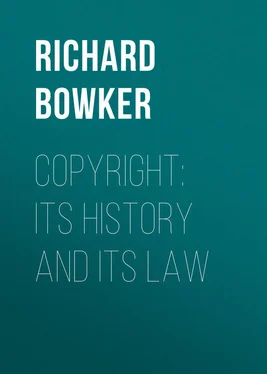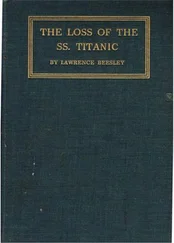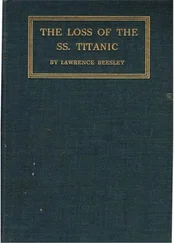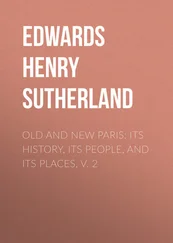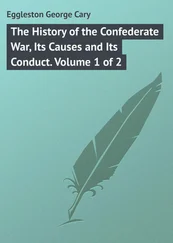Richard Bowker - Copyright - Its History and Its Law
Здесь есть возможность читать онлайн «Richard Bowker - Copyright - Its History and Its Law» — ознакомительный отрывок электронной книги совершенно бесплатно, а после прочтения отрывка купить полную версию. В некоторых случаях можно слушать аудио, скачать через торрент в формате fb2 и присутствует краткое содержание. ISBN: , Жанр: foreign_antique, foreign_prose, Историческая проза, на английском языке. Описание произведения, (предисловие) а так же отзывы посетителей доступны на портале библиотеки ЛибКат.
- Название:Copyright: Its History and Its Law
- Автор:
- Жанр:
- Год:неизвестен
- ISBN:http://www.gutenberg.org/ebooks/39502
- Рейтинг книги:3 / 5. Голосов: 1
-
Избранное:Добавить в избранное
- Отзывы:
-
Ваша оценка:
- 60
- 1
- 2
- 3
- 4
- 5
Copyright: Its History and Its Law: краткое содержание, описание и аннотация
Предлагаем к чтению аннотацию, описание, краткое содержание или предисловие (зависит от того, что написал сам автор книги «Copyright: Its History and Its Law»). Если вы не нашли необходимую информацию о книге — напишите в комментариях, мы постараемся отыскать её.
Copyright: Its History and Its Law — читать онлайн ознакомительный отрывок
Ниже представлен текст книги, разбитый по страницам. Система сохранения места последней прочитанной страницы, позволяет с удобством читать онлайн бесплатно книгу «Copyright: Its History and Its Law», без необходимости каждый раз заново искать на чём Вы остановились. Поставьте закладку, и сможете в любой момент перейти на страницу, на которой закончили чтение.
Интервал:
Закладка:
Copyright evolution
It may be noted that while throughout the British Empire English precedent is naturally followed, the more restrictive American copyright system has unfortunately influenced legislation in Canada and Newfoundland, and in Australia. France, open-handed to authors of other countries, has afforded precedent for the widest international protection and for the international term; while Spain, with the longest term and most liberal arrangements otherwise, has been followed largely by Latin American countries. The International Copyright Union has reached in the Berlin convention almost the ideal of copyright legislation, and this has been closely followed in the Buenos Aires convention of the Pan American Union. The world over, there seems to have been a general evolution of copyright protection from the rude and imperfect recognition of intellectual property as cognate to other property, for a term indefinite and in a sense perpetual, almost impossible of enforcement in the lack of statutory protection and penalties. Systems of legislation, at first of very limited term and of restricted scope, have led up to the comprehensive codes giving wide and definite protection for all classes of intellectual property for a term of years extending beyond life, with the least possible formalities compatible with the necessities of legal procedure. Unfortunately in the United States of America the forward movement which produced the "international copyright amendment" of 1891 and the code of 1909, conspicuously excellent despite defects of detail, was in some measure offset by retrogression, as in the manufacturing restrictions. Until this policy, which still remains a blot on the 'scutcheon, is abandoned, as the friends of copyright hope may ultimately be the case, the United States of America cannot enter on even terms the family of nations and become part of the United States of the world.
R. R. Bowker.December, 1911.
Postscript. Since this book has been passing through the press, Cuba has been added to the countries in reciprocal relations with the United States with respect to mechanical music by the President's proclamation of November 27, 1911; Russia has made with France its first copyright treaty, in conformity with the new Russian code of 1911; and the new British code, referred to on p. 33, having passed the House of Commons August 17, passed the House of Lords December 6, and after concurrence by the House of Commons in minor amendments, mostly verbal, became law by Crown approval, December 16, 1911, as noted on p. 374. The text of the act in the appendix follows the official text as it now stands on the English statute books; the summary (pp. 374-80) describes the act as it became law – and the earlier references are in accordance therewith, with a few exceptions. These exceptions mostly concern immaterial changes, made in the House of Lords. Within January, 1912, Brazil has adopted a new measure for international copyright, and a treaty has been signed between the United States and Hungary, the twenty-fifth nation in reciprocal relations with this country.
CONSPECTUS OF COPYRIGHT BY COUNTRIES
Under the names of countries are given dates of the basic and latest amendatory laws. International relations are shown by the name in small caps of the convention city when a country is a party to the International Copyright Union or the Pan American conventions, and by the names of countries with which there are specific treaties, excepting those within the union or conventions. The general term of duration is entered, without specification of special terms for specific classes. Places of registration and deposit are indicated by R and D when these are not the same. The number of copies required and in some cases period after publication within which deposit is required are given in parentheses. Notice of copyright or of reservation is indicated. Special exceptions or conditions are noted so far as practicable under remarks. An asterisk indicates that specific exceptions exist.
The International Copyright Union includes (A) under the Berlin convention, 1908 (a) without reservation Germany, Belgium, Luxemburg, Switzerland, Spain, Monaco, Liberia, Haiti, Portugal, and (b) with reservation France, Norway, Tunis, Japan; (B) under the Berne convention, 1886, and the Paris additional act and interpretative declaration, 1896, Denmark, Italy; (C) under the Berne convention, 1886, and the Paris additional act, 1896, Great Britain; (D) under the Berne convention, 1886, and the Paris interpretative declaration, 1896, Sweden. The Pan American conventions agreed on at Mexico City, 1902, Rio de Janeiro, 1906, and Buenos Aires, 1910, have not been ratified except that of Mexico by the United States and by Costa Rica, Guatemala, Honduras, Nicaragua, Salvador, and doubtfully by Cuba and Dominican Republic; that of Rio by a few states insufficient to make it anywhere operative; and that of Buenos Aires by the United States. The South American convention of Montevideo, 1889, has been accepted by Argentina, Paraguay and Uruguay, Peru and Bolivia, and has the adherence (in relation with Argentina and Paraguay only) of Belgium, France, Italy and Spain. The five Central American states have a mutual convention through their Washington treaty of peace of 1907.
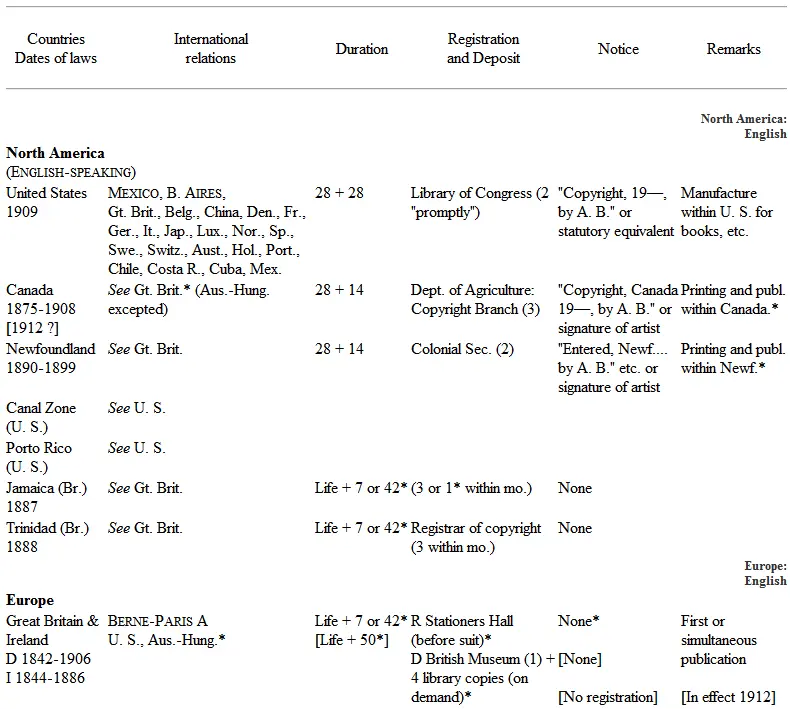
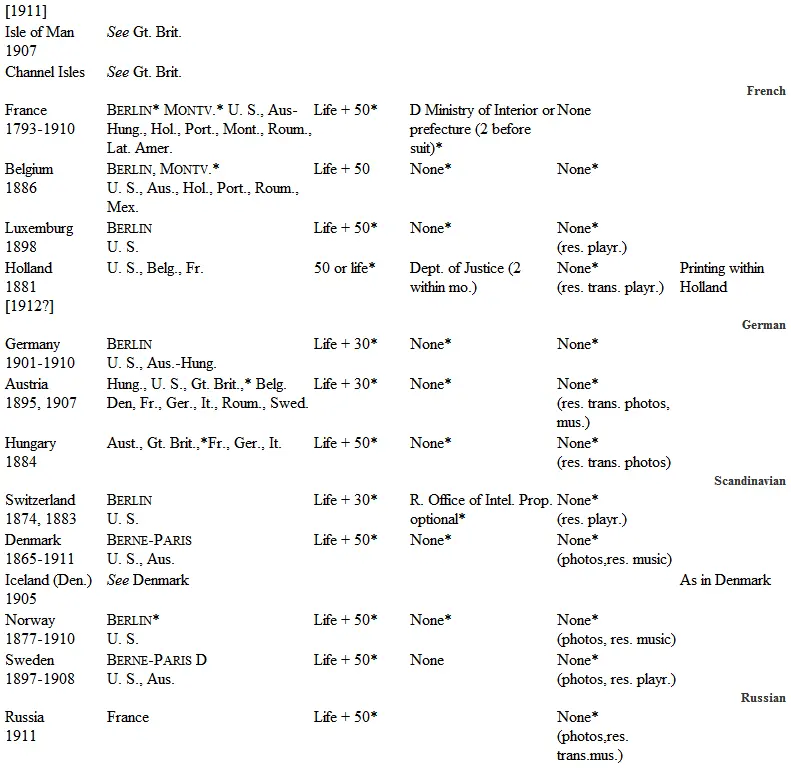
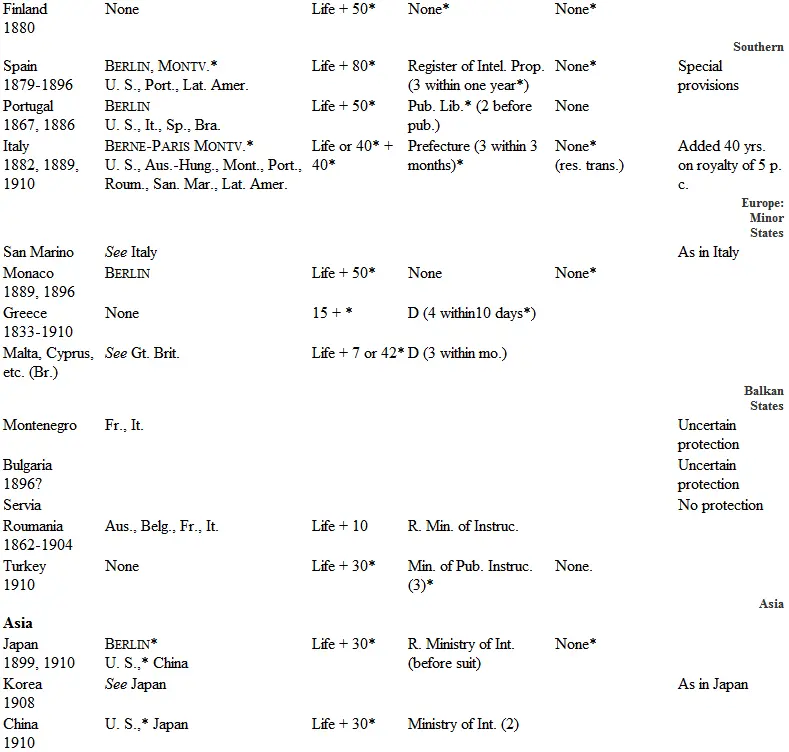
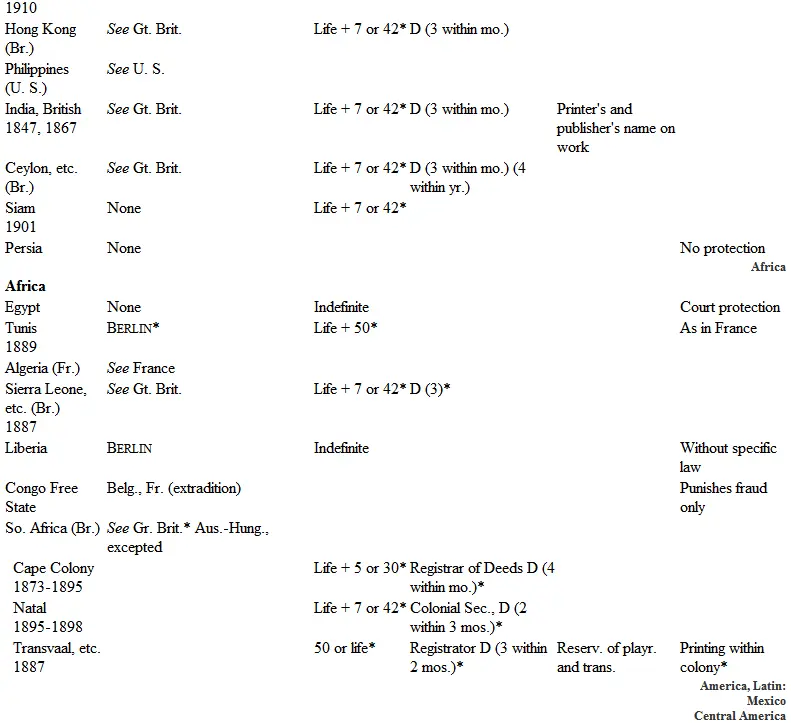
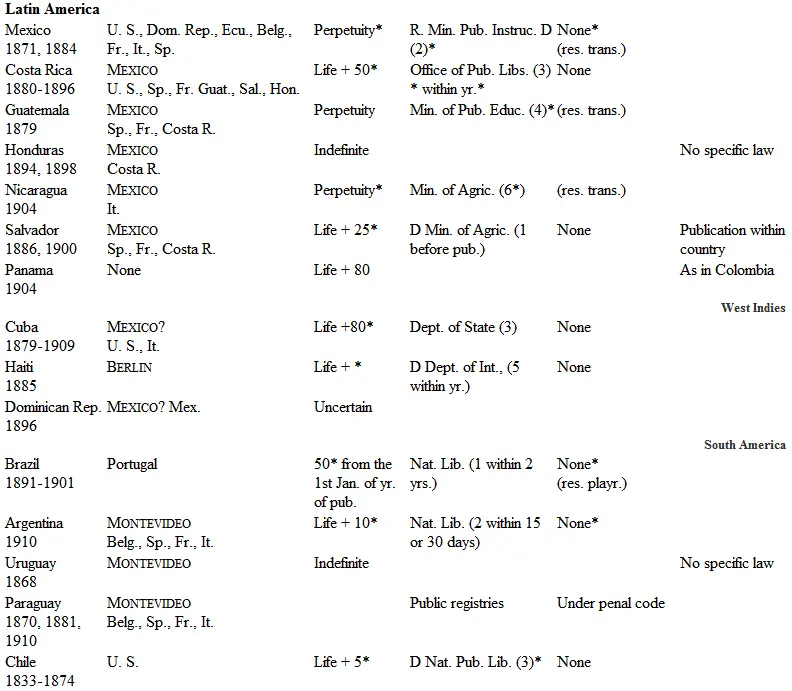
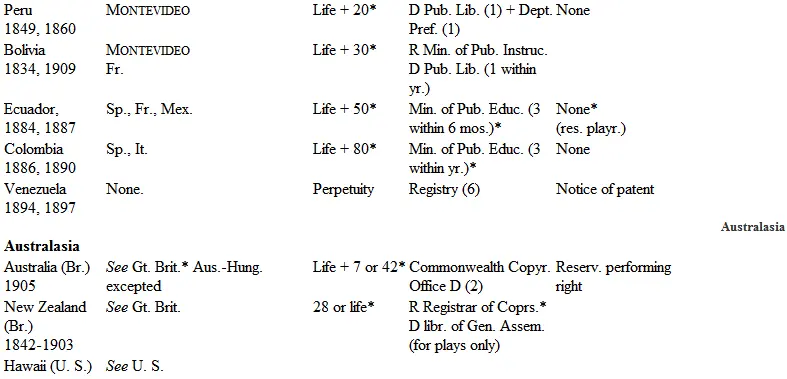
COPYRIGHT
ITS HISTORY AND ITS LAW
I
THE NATURE AND ORIGIN OF COPYRIGHT
Copyright, meaning
Copyright (from the Latin copia , plenty) means, in general, the right to copy, to make plenty. In its specific application it means the right to multiply copies of those products of the human brain known as literature and art.
There is another legal sense of the word "copyright" much emphasized by several English justices. Through the low Latin use of the word copia , our word "copy" has a secondary and reversed meaning, as the pattern to be copied or made plenty, in which sense the schoolboy copies from the "copy" set in his copy-book, and the modern printer calls for the author's "copy."
Its two senses
Copyright, accordingly, may also mean the right in copy made (whether the original work or a duplication of it), as well as the right to make copies, which by no means goes with the work or any duplicate of it. Said Lord St. Leonards in the case of Jefferys v. Boosey in 1854: "When we are talking of the right of an author we must distinguish between the mere right to his manuscript, and to any copy which he may choose to make of it, as his property, just like any other personal chattel, and the right to multiply copies to the exclusion of every other person. Nothing can be more distinct than these two things. The common law does give a man who has composed a work a right to that composition, just as he has a right to any other part of his personal property; but the question of the right of excluding all the world from copying, and of himself claiming the exclusive right of forever copying his own composition after he has published it to the world, is a totally different thing." Baron Parke, in the same case, pointed out expressly these two different legal senses of the word copyright, the right in copy, a right of possession, always fully protected by the common law, and the right to copy, a right of multiplication, which alone has been the subject of special statutory protection.
Читать дальшеИнтервал:
Закладка:
Похожие книги на «Copyright: Its History and Its Law»
Представляем Вашему вниманию похожие книги на «Copyright: Its History and Its Law» списком для выбора. Мы отобрали схожую по названию и смыслу литературу в надежде предоставить читателям больше вариантов отыскать новые, интересные, ещё непрочитанные произведения.
Обсуждение, отзывы о книге «Copyright: Its History and Its Law» и просто собственные мнения читателей. Оставьте ваши комментарии, напишите, что Вы думаете о произведении, его смысле или главных героях. Укажите что конкретно понравилось, а что нет, и почему Вы так считаете.
